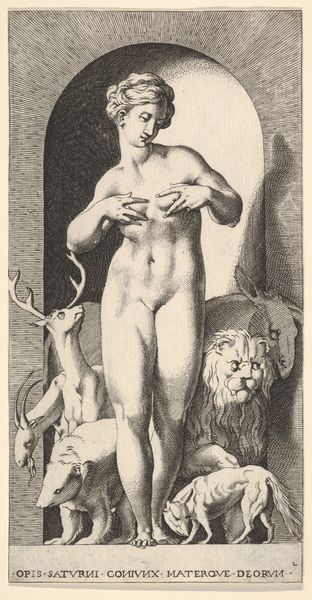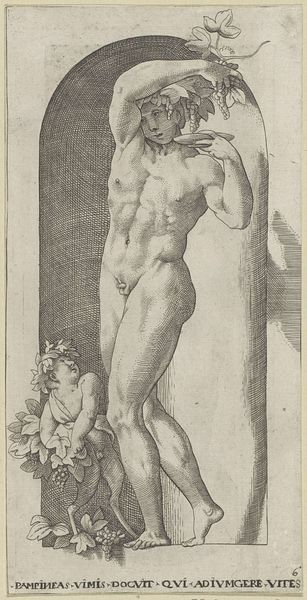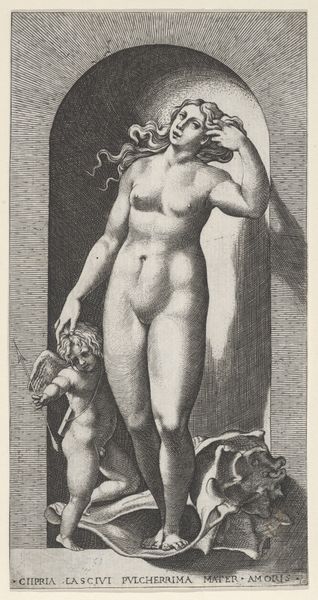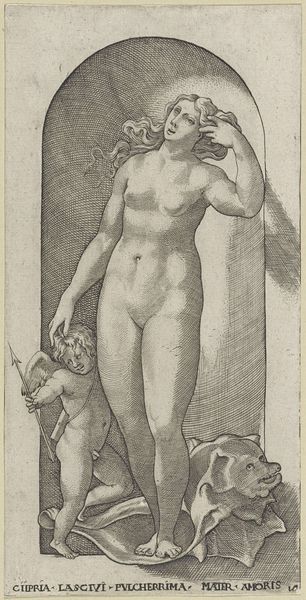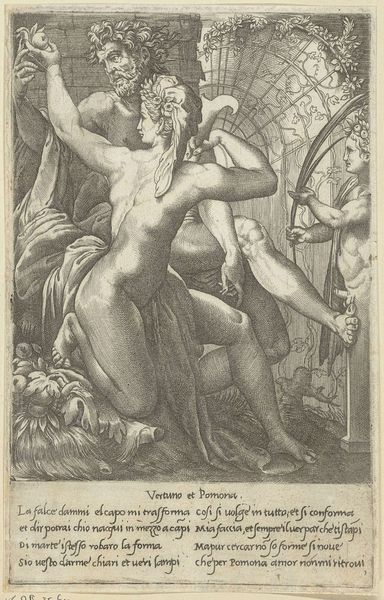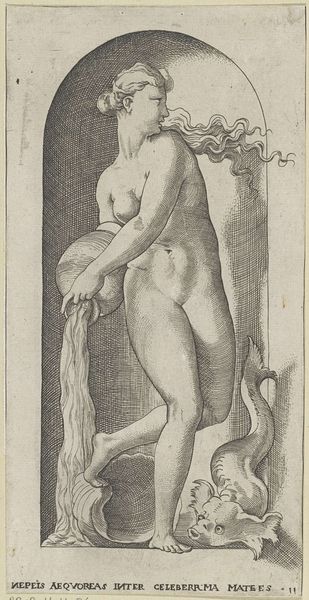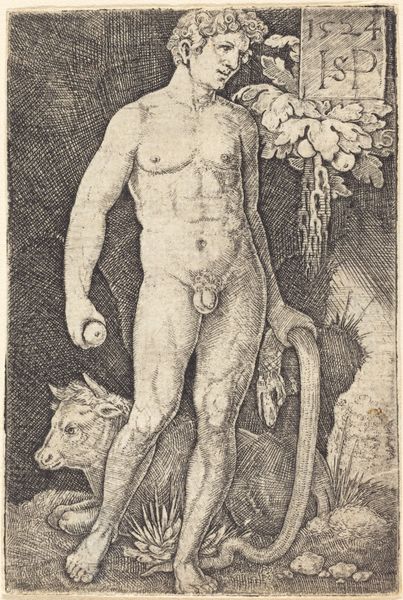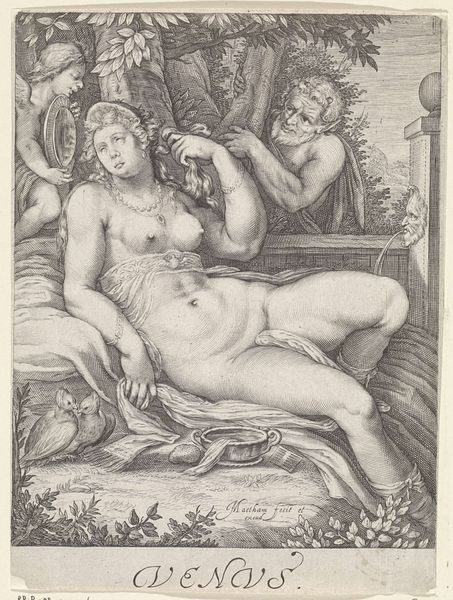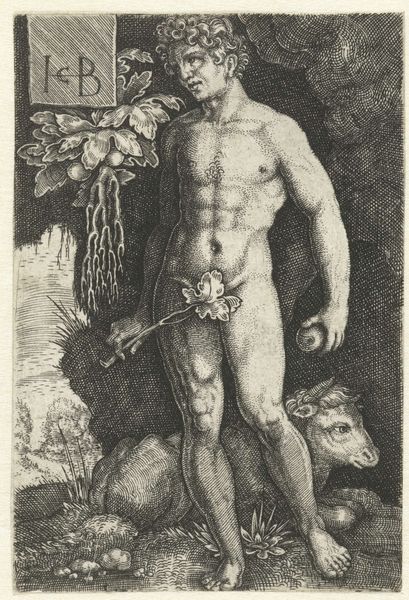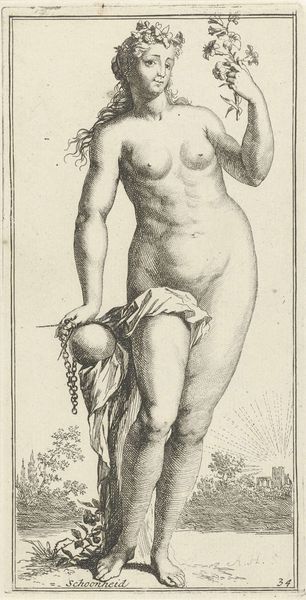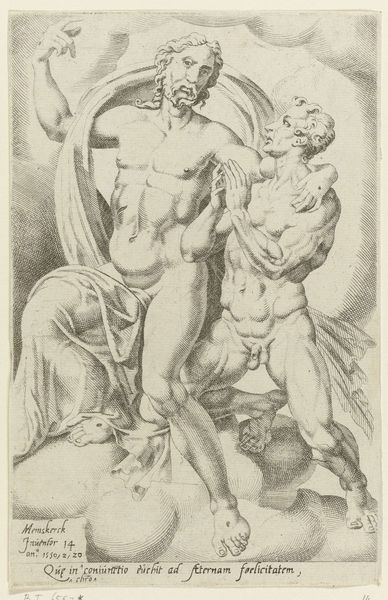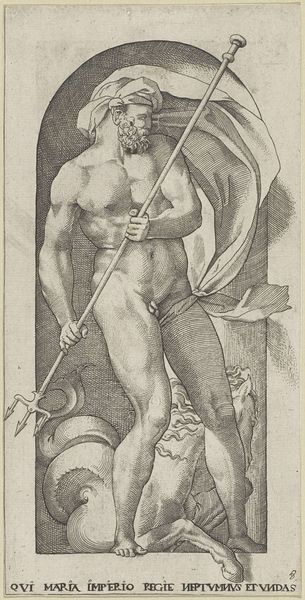
Dimensions: height 214 mm, width 105 mm
Copyright: Rijks Museum: Open Domain
This print of Opis was made by Jacob Binck sometime in the 16th century. It’s an etching, meaning that the artist covered a metal plate with wax, drew this composition with a needle to expose the metal, and then bathed the plate in acid. The acid bit into the metal only where the wax had been removed, leaving an image that could be inked and printed. Look closely, and you’ll see that the entire image is built up from tiny lines, each one representing a single pass of the etcher’s needle. The varying density of these lines creates areas of light and shadow. It's a laborious process requiring incredible skill, with the intensity of the image arising directly from this hand-made quality. Prints like this were part of a burgeoning industry in early modern Europe. They allowed images to be reproduced and disseminated widely. Consider this print not just as an artwork, but as a commodity circulating in a rapidly expanding market for images, a precursor to the mass media we know today.
Comments
No comments
Be the first to comment and join the conversation on the ultimate creative platform.
